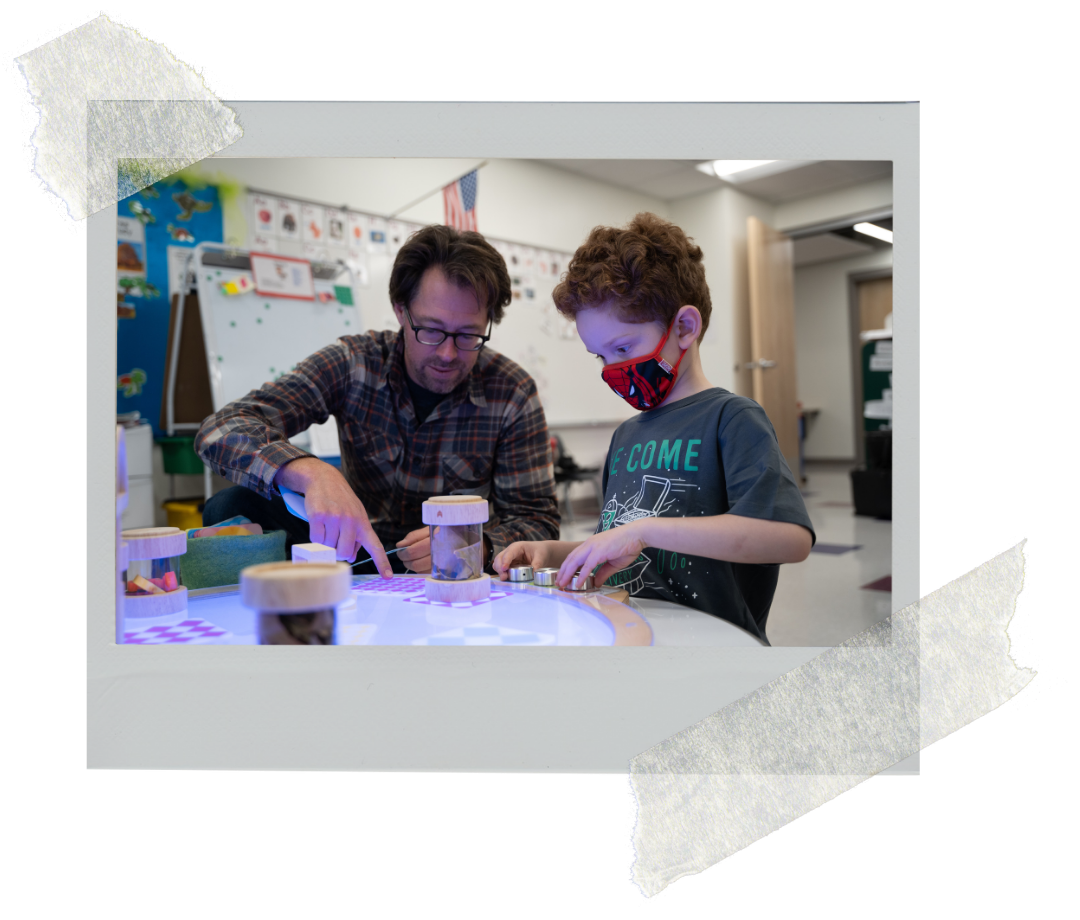There are a lot of different things that pull our attention and focus. We have worries, obligations, and anticipations occurring simultaneously in various aspects of our lives. Stepping into a classroom of young children with all of those pieces mulling around in our brain makes it challenging to be present with children. It can feel like operating on floating mode, where daily tasks get done and the priority is simply managing to get through the day.
While there are moments of floating that are necessary — we’re all human — living here permanently can lead to burnout and dissatisfaction in our profession. With everything that is going on we deserve to find joy in the classroom with our children.

While floating mode places us above some of the details of the day, it also has us counting on the wind to propel us.
It takes a conscious effort to shift focus when we enter the classroom. Creating a habit of refocusing will help to ease the amount of effort that it takes over time, as well as signify the start and end of teaching time. It’s important that the habit is formed meaningfully and intentionally, it takes some trial and error to find the right focus shifting habit. Behavior change, as we know from working with young children, does take time to understand a new process fully and work to build on that skill. Start by giving yourself the time to skill-build and enter the classroom with presence.
Here are some examples of shifting focus habits:
- A breathing routine to help calm and oxygenate the brain. (Click the link to walk through a breathing exercise)
- A journaling session to jot down all of the thoughts and feelings pulling away from presence. (This can be very short or long depending on your schedule. Download The Finding Joy reflection journal, it provides a space for this exact habit.)
- A mantra repeat, create a short phrase that helps you reconnect with the classroom and utilize it every time you feel your presence wander.
- Give worth to the physical step, as you enter into the classroom think about that step as if you are stepping fully into your capability.

As you enter the classroom with presence, take in all that you notice through all senses. What can you see and hear? Notice the children. They have a wonderful way of being exactly who they are in the moment. By observing children as they enter the classroom we can assess if they were able to come into the space with presence or if they need support to reset.
When children are engaged in play they communicate a readiness to be fully present with the materials. When we meet children’s presence with our presence we’re creating a snapshot of electric connectivity. A moment where we both are fully known, sharing the joy of presence through play!

